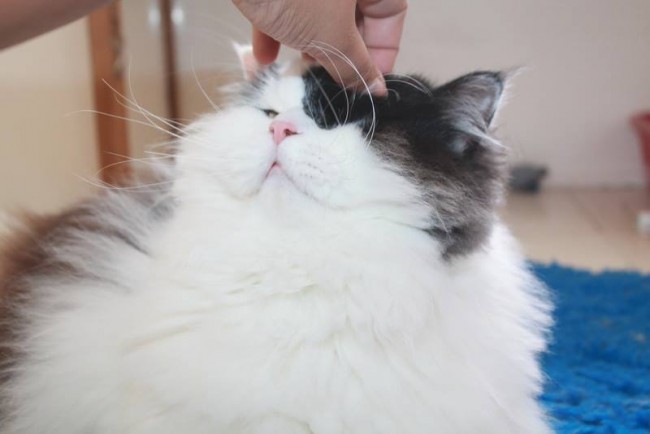and Dubai International Airport
and Dubai International Airport

There’s nothing quite like the oh-so-hard-to-forget, UNMISTAKABLE sound of your kitty-cat retching, hacking and/or gagging up a hairball, is there? Immediately your inner alarm bells sound off and you jump up helplessly standing over kitty probably muttering kind, soothing words of compassion and encouragement. Yet sadly, other than waiting for the incident to pass, there’s not much you can do in the heat of the moment. However, there are steps you can take to alleviate your fluff-ball’s dealings with the very normal and occasional hairball.
So, what causes your cat to develop hairballs (the scientific name of which is trichobezoar, believe it or not)? Most cat owners can vouch for the fact that in addition to sleeping A LOT and meowing A LOT, cats seem to like to groom themselves A LOT too. You may even wonder to yourself... DOES... SHE... EVER... STOP?!! Well, know that your fastidious feline licks herself for a number of reasons: grooming (SOMEONE needs to get rid of the dead hair stuck to her body); to cool down (as the saliva evaporates, a cooling-effect takes place - NICE!), and; to release certain emotions (anxiety, conflict or boredom).
Your cat is designed to be a self-contained grooming-machine with her sandpaper-like, hooked tongue to remove hair, her super-sharp teeth to dig out whatever it is that needs to be dug out, and her dainty little paws that she so adeptly uses as a facial washcloth (SO SO cute to observe a cat wash its face!). While completely normal, all this cleaning, scrubbing and licking means that the hair she’s pulling off her body eventually needs to go somewhere... and wouldn’t ya know it!… that somewhere happens to be a journey that involves a sometimes-return ticket down her digestive tract. During the grooming process some of the removed hair can become stuck and begin to accumulate in her system, resulting in hairballs. You see, cats that have longer coats, such as Persians, Angoras, Himalayans, Maine and Coon Cats are quite FLUFFY and will spend a seemingly inordinate amount of time managing their lustrous coats. Of course, all cat breeds groom and are susceptible to hairballs, however the longer-haired breeds just have… well… MORE hair! And while you can’t completely prevent hairballs in cats, you can take a few steps to help minimize them.
So go on, step in and give her a brushing every few days - that is, IF she’ll allow it. It’s a great time to bond with your kitty and for you it offers an opportunity to give her a thorough once-over. And you can consider feeding her hairball-specific foods created to improve the condition of her coat and to reduce the amount of shedding. There are even supplements that coat her digestive tract to allow the hair to smoothly pass on through.
This all said, do rest assured that it is quite normal for your cat to ingest her hair and to regurgitate a hairball or two. You may have a chronic problem brewing if you begin to see a lot of hair in her faeces, however, or frequently hear the tell-tale retch of a hairball making its way back up and out! Or if she appears constipated or has diarrhoea for more than two or three days, it might be a good time to consult your vet.
Wondering what else might be a good food choice for your puddy-tat? Have a read here all about why wet food is highly recommended: Wet Food for your Cat ~ The Better Choice
Office Coordinators -cum- Receptionists
Animal Relocations Officers

